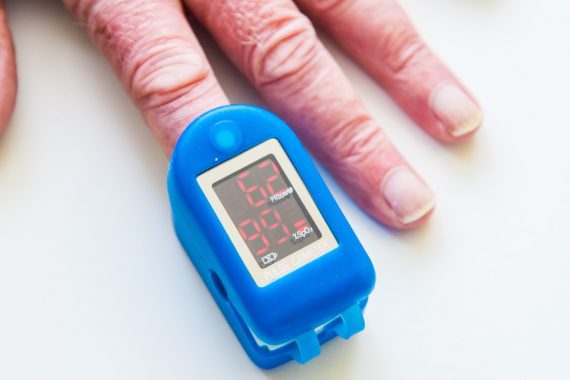Guidelines for different groups, and exertional desaturation testing
Home monitoring and resources for patients:
NHSE guidance states certain groups of patients who are symptomatic of Covid-19 should be provided with a pulse oximeter, home monitoring guidance and monitoring texts/check in calls:
- those >65 years
- or <65 years and at higher risk from Covid-19
- or where clinical judgement applies, considering individual risk factors
Pulse oximetry with self-monitoring should be available to any adult aged 18 – 64, that has tested positive and has not been double vaccinated
NHSE have produced a comprehensive patient leaflet for patients with suspected coronavirus who have not been admitted to hospital and will be isolating at home. This includes how to interpret oxygen saturations.
This YouTube video advises patients how to use a pulse oximeter, the danger signs to look out for and when to call for urgent help
Oxygen saturation levels that require medical review:
Oxygen saturation level of 93 or 94%
NHSE advise patients to seek medical help from their GP
NHS London Networks advise that these patients receive daily follow up to assess change in level of breathless at rest and with usual activity
Pregnant women with pulse oximeter readings of 94% or less should be advised to attend hospital immediately or call 999
Oxygen saturations of 92% or less
Patients should attend A&E within 1 hour or call 999
Exertional desaturation testing
The validated 1-minute sit-to-stand test (patient goes from sit to stand as many times as they can) and the unvalidated 40-step test (take 40 steps on a flat surface) are the most appropriate for recommending to patients at home. A positive desaturation test is a fall of 3% or more in pulse oximetry
- Some patients have normal pulse oximetry at rest but their readings deteriorate on exertion. Identifying those with exertional desaturation and escalating their care more promptly could reduce mortality
- They are likely to be specific but not sensitive (that is, a positive test is serious cause for concern but a negative test should not necessarily reassure)
- Neither should be attempted outside a supervised care setting if oximeter reading is <96%
Some factors may affect the accuracy of pulse oximeter measurements and GPs should interpret results in the context of other signs and symptoms of low oxygen levels
Written by Dr Poppy Freeman














